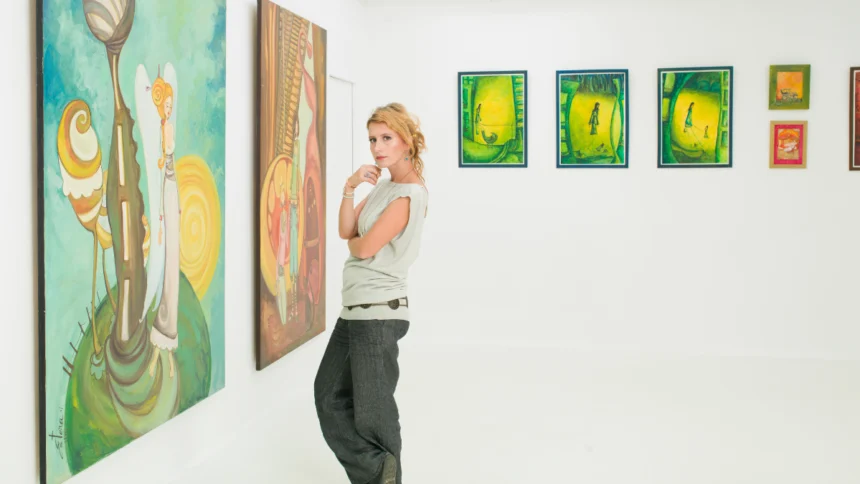Introduction to Modern Art’s Journey
Modern art, a term that encompasses a diverse range of artistic expressions and techniques, has undergone a remarkable evolution, challenging norms and redefining what it means to create. Rooted in the late 19th and early 20th centuries, modern art broke free from traditional standards, inviting artists to experiment and embrace bold, innovative forms. From the revolutionary brushstrokes of Impressionists to the abstract forms of expressionists, modern art has pushed boundaries and encouraged audiences to see the world differently. This journey has been transformative, offering fresh ways to interpret human experience and reshaping culture in powerful ways.
The Rise of Abstract and Surreal Movements
The early 20th century marked a critical shift with the advent of abstract and surreal art, which departed from realistic representation and sought to explore inner emotions, dreams, and the subconscious. Movements like Surrealism, led by artists such as Salvador Dalí and René Magritte, used fantastical elements to probe the depths of the human psyche. Abstract art, championed by artists like Wassily Kandinsky and Piet Mondrian, emphasized color, form, and emotion over recognizable subjects. These movements gave rise to unique styles and techniques that continue to influence art galleries, museum exhibits, and contemporary works.
Expressionism, another major movement, also emerged as a reaction to modern life’s alienation and trauma, especially post-WWI. It used intense colors and exaggerated forms to convey raw emotional experiences, seen in works by artists like Edvard Munch and Ernst Ludwig Kirchner. These movements not only inspired creativity and new forms of visual art but also challenged cultural boundaries, redefining what could be considered art.
Digital Art and Its Expanding Role
With the advent of new technology, the world has seen an explosion of digital art, opening doors for artists to experiment with media that go beyond the canvas. From digital paintings and animations to virtual reality installations and interactive experiences, digital art has added a new dimension to modern art. Artists now have the tools to create immersive experiences that engage audiences in unique, often participatory ways.
Digital art, in many ways, democratizes artistic expression, allowing a wider range of artists to share their work globally through social media and online galleries. New media art and techniques, such as 3D modeling, augmented reality, and artificial intelligence-driven creations, have enriched the landscape of modern art, blending technological innovation with artistic freedom. This convergence has led to what some call a new “art revolution,” broadening the impact of art across cultures and generations.
How Art Shapes and Reflects Culture
Modern art is not just about breaking away from tradition; it is deeply intertwined with cultural evolution. Art has the power to mirror societal values, question norms, and inspire change. Throughout history, art has played a crucial role in activism and social movements, from the anti-war messages of Picasso’s “Guernica” to the vibrant street art and graffiti of today that speaks out against injustice.
Modern art’s influence on culture is evident in popular movements like pop art, where artists like Andy Warhol challenged the distinction between high and low art, drawing from consumer culture and everyday imagery. Similarly, contemporary art installations in public spaces often address issues of identity, environment, and politics, engaging the public in conversations that extend beyond the art itself.
As cultural boundaries become more fluid, modern art continues to reflect a more globalized world, merging elements from diverse traditions and experiences. This fusion is seen in today’s art galleries and museum exhibits, where artists draw from a rich tapestry of influences, from traditional sculpture and minimalism to the bold expressions of street art. Modern art not only mirrors culture but also acts as a catalyst for societal shifts, encouraging viewers to reconsider their perspectives and connect with broader, often universal, human experiences.
The Future of Modern Art
Looking ahead, the future of modern art promises to be as dynamic and boundary-breaking as its past. As new technologies emerge and cultures continue to blend, modern art will likely push further into realms of interaction and immersion, challenging traditional forms and introducing new methods of artistic expression. With digital art, virtual reality, and AI-driven installations gaining prominence, the line between artist and audience may blur even further, inviting greater participation and collaboration.
In an age where artistic freedom is more accessible than ever, modern art will continue to evolve, shaping culture and inspiring creativity worldwide. This ongoing transformation underscores art’s enduring power to capture the imagination, question conventions, and transcend cultural divides. For artists and audiences alike, modern art remains a thrilling journey—one that reflects the complexities of the modern world and the boundless possibilities of human creativity.


